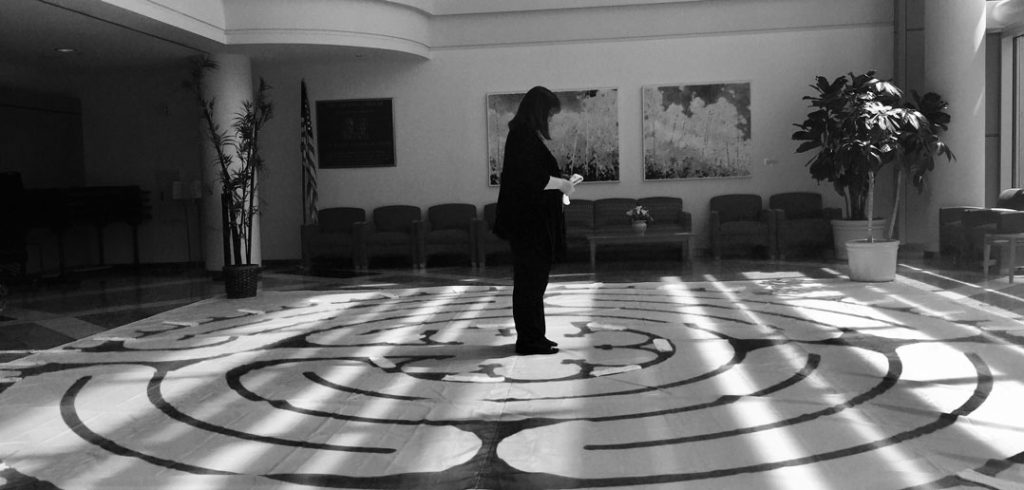“The caregiver often has things going on in their own life and focusing on the patient’s experience is something we, as caregivers, want to always have on our minds,” said Berry, who graduated in May with a doctorate in ministry from the Graduate School of Religion and Religious Education (GRE).
In April, Berry organized an event at the multispecialty hospital called “Walking the Patient Experience: Labyrinth Meditation,” where she asked staff to reflect on a patient who challenged or inspired them. Afterwards, they were invited to take a walk on a labyrinth, an intricate circular path, on a canvas that was lined with unworn patient socks.

The idea was inspired by lessons she learned in the Foundations in Pastoral and Practical Theology course, taught by Tom Beaudoin, Ph.D., an associate professor of religion, where she explored how objects and everyday materials can be used to promote spiritual growth.
“In chaplaincy, we integrate spirituality, behavioral health, mental health, and emotional health as well as education and holistic care, which looks at the whole person,” said Berry.
“[Labyrinth meditation] was a meaningful way for the spiritual care department to create more awareness about patient experience, to support staff, and to bring to life the sacredness of the hospital space.”
As participants made their journey towards the center of the labyrinth, they could reflect on several things, including a patient’s suffering, how caregivers coped with their patient’s struggles, and how they experience compassion for them as their caregivers.
“When you work with patients for a long time, you get to know them,” said Berry. “If their health deteriorates or they die, sometimes that grief can linger.”
Berry also provided a wooden finger labyrinth for participants who were not able to walk the full-size labyrinth. The small-scale, portable labyrinth allowed them to trace the path to the center with their fingers. Through the exercises, participants reflected on a variety of other personal experiences, she said.
“One of the volunteers shared that when she looks at the four quadrants of the labyrinth, she thinks of the four seasons,” said Berry. “And as she walks through each of them she reflects on the season of [her]life, considering where she has been, where she is, and what may be unfolding next for her in her life.”
Berry views the labyrinth walk as a form of meditation that could inspire hospital staff to slow down and better understand their patients’ diverse needs and perspectives.
“The nice thing about the labyrinth is that it’s interfaith,” she said. “People may understand it as prayer or a contemplative experience to reflect and be aware of their bodies and what it means for their foot to hit the ground. The goal is to allow your body to move through the circles, twists, and turns. And trust that you will get to the center.”


